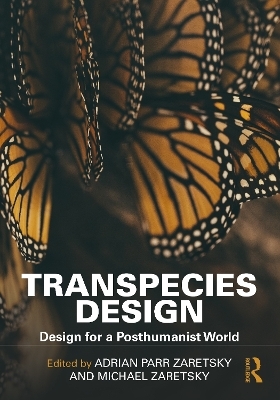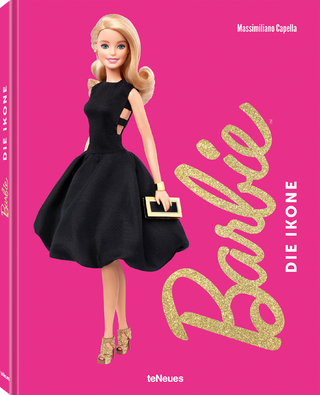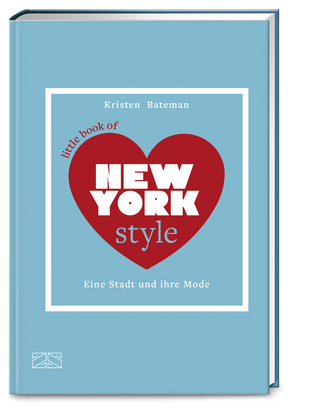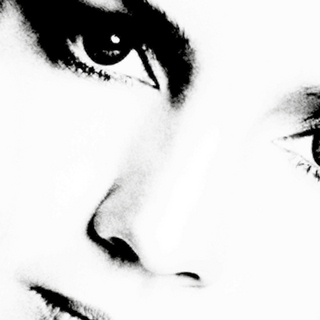
Transpecies Design
Routledge (Verlag)
978-1-032-51689-9 (ISBN)
In May 2019, the United Nations released the Global Assessment Report on Biodiversity and Ecosystem Services which warned that human activities will drive nearly one million species to extinction in a few decades. The primary reasons for this are habitat loss and biodiversity demise caused by changing climate, pollution, introducing nonindigenous species, clearing land, over population, and consumption. Given this situation, humans must change course as both human wellbeing and the wellbeing of other-than-human species are imbricated in one another. One way humanity can accomplish the needed transformation is to move beyond an anthropocentric view of life by embracing a transpecies approach that is premised upon interconnected flourishing.
Transpecies design, as outlined in this book, offers a new approach to regenerating the natural environment while honoring biodiversity. Rather than presenting the human experience as the goal of design, transpecies design takes the inextricable linkages connecting living things as both its starting point and end goal. As such, it moves beyond human experience serving as the fundamental ingredient for making better design processes and decisions.
This book is essential reading for artists, designers, and architects, as well as students of architecture, landscape architecture, interior architecture, art, product design, urban design, planning, environmental philosophy, and cultural studies.
Adrian Parr Zaretsky is the Dean of the College of Design at the University of Oregon, UNESCO Chair of Water and Human Settlements, and a Senior Fellow of the Design Futures Council. She is a philosopher, storyteller, and creative practitioner. She curated the Transpecies Design exhibition for the European Cultural Center’s Space, Time, Existence 2023 Venice Architecture Biennale and the Watershed Urbanism exhibition for the 2021 ECC Venice Architecture Biennale. Her documentaries and art films have received numerous awards at independent film festivals around the world. She has published extensively on environmental culture and politics and her most recent book publication Earthlings (Columbia University Press 2022) earned a silver medal at the 2023 Nautilus Books Awards (environment category). Other publications include the trilogy: Birth of a New Earth (Columbia University Press 2017), The Wrath of Capital (Columbia University Press 2012), and Hijacking Sustainability (MIT Press 2009). She is the editor, with Santiago Zabala, of the Outspoken series published with McGill University Press. Michael Zaretsky, AIA, is an Associate Professor and Head of the Department of Architecture in the College of Design at the University of Oregon. Zaretsky is a licensed architect with extensive experience in local and international design/build projects. His research is focused around culturally and environmentally responsive public interest design projects and community engagement with underserved communities locally and internationally. His published work includes Precedents in Zero-Energy Design: Architecture and Passive Design in the 2007 Solar Decathlon (Routledge Press 2009) and New Directions in Sustainable Design, with Dr. Adrian Parr Zaretsky (Routledge Press 2010). Zaretsky has articles published in several architectural journals and has presented at conferences around the world on Sustainability, Humanitarian Design, Public Interest Design, Design/Build and Community Engagement. From 2008–18, he was the Director of Design for the Roche Health Center in rural Tanzania, a Village Life Outreach Project. Roche Health Center is the first-ever permanent healthcare facility in this region. The Roche Health Center opened on April 1, 2011, and provides health care to as many as 20,000 villagers. From 2011–18, he was the Director of MetroLAB Design/Build, an academic community design/build program at the University of Cincinnati. His work is included in the 2018 book The Public Interest Design Education Guidebook, edited by Bell and Abendroth.
Section I: Co-Habitation 1. How Does Ecological Science Support Transpecies Design? 2. Interspecies, Multispecies, or Transpecies Design? What’s the Difference? 3. Transpecies Design and Biomimicry 4. Design Against Extinction: Multispecies Methods and Engineered Living Materials 5. Garden City to City in Nature: A Case for the Cohabitation of Tidal Ecologies along Singapore’s Urban Waterfront 6. Floating-With: Buoyant Ecologies of Collaboration and Solidarity 7. Unbecoming Human: Patricia Picinini’s Bioart and Postanthropocentric Posthumanism 8. Salt Formations Section II: Co-Creation 9. Origin and Evolution of Biodiversity: A Story of Life on Earth 10. Adrian Parr Zaretsky in Conversation With Janet Laurence 11. Birdsong and the Transpecies Aesthetic 12. Entangled Intelligences: Transpecies Dialogues of Art 13. Designing with Non-Humans: Ralph Ghoche in Conversation With Joyce Hwang 14. The Problem Is the Burning House 15. Everything With Wings 16. Adrian Parr Zaretsky in Conversation With Carla Bengtson 17. Piñon Passage
| Erscheinungsdatum | 22.08.2024 |
|---|---|
| Zusatzinfo | 27 Halftones, black and white; 27 Illustrations, black and white |
| Verlagsort | London |
| Sprache | englisch |
| Maße | 174 x 246 mm |
| Gewicht | 340 g |
| Themenwelt | Kunst / Musik / Theater ► Design / Innenarchitektur / Mode |
| Technik ► Architektur | |
| ISBN-10 | 1-032-51689-5 / 1032516895 |
| ISBN-13 | 978-1-032-51689-9 / 9781032516899 |
| Zustand | Neuware |
| Informationen gemäß Produktsicherheitsverordnung (GPSR) | |
| Haben Sie eine Frage zum Produkt? |
aus dem Bereich


